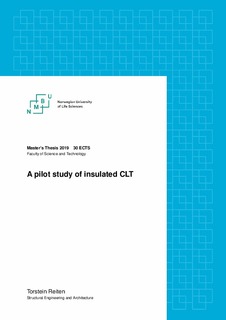| dc.description.abstract | In order to face the rising challenges of increased global warming, coming up with new and sustainable solutions for the building industry is important. This has led to an increased interest for timber as a building material, with Cross Laminated Timber (CLT) emerging as a popular concept in recent years. Due to regulations regarding the energy efficiency of buildings, exterior CLT walls and roof structures have to be covered with insulation to achieve sufficient thermal resistance in cold climates. In this study, a new concept of insulated CLT is proposed, investigating possibility of using wood fibre boards as a structural layer within laminated timber structures.
The first part of the thesis contains an introduction to timber based hybrid structures, explaining some of the benefits that can be achieved by combining the properties of timber with that of other materials. The theoretical background for composite structures then follows in a separate chapter, laying the mathematical groundwork for an analytical evaluation of the proposed concept.
The second part of the thesis contains experimental investigations, designed to answer some of the most relevant questions regarding the mechanical properties of the material. The experiments include testing of shear strength and shear modulus of the fibre boards, and their sensitivity to moisture content. Composite action between timber and fibre boards is also studied through an out-of-plane bending test on a composite beam, and in-plane shear tests on composite panels.
In the final part of the thesis, the feasibility of creating insulated CLT is investigated based on results from the experiments. The flexural performance of conceptual composite panels are modelled through the use of conventional calculation methods and finite element analysis.
The study has shown that the investigated fibre boards can be used as a structural layer within laminated timber structures, achieving sufficient bonding quality to prevent failure at the glue interface. The material has a shear modulus of approximately 50MPa, which is high enough to achieve considerable composite action. The shear strength may pose limitations for possible applications, with characteristic values ranging from 0.219MPa to 0.282MPa depending on the density and the configuration of the test pieces. The main limiting factor for the concept seems to be the material’s sensitivity to moisture. | nb_NO |

